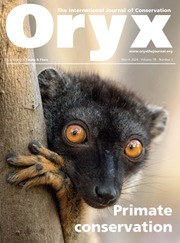The genus Pteroptyx is notable among firefly genera because of extensive research on its species. Certain species within the genus gather on mangrove trees, creating a bioluminescent display along intertidal rivers, making them iconic ecotourism spots. Ongoing research on firefly taxonomy has led to the division of Pteroptyx into three groups, with one group exclusively comprising species characterized by deflexed elytra, commonly referred to as bent-winged fireflies (Jusoh et al., 2018, Zootaxa, 4456, 1–71). Of the 14 bent-winged firefly species, nine inhabit mangrove ecosystems, but the habitats of the remaining five (Pteroptyx decolor, Pteroptyx gombakia, Pteroptyx masatakai, Pteroptyx sulawesiensis and Pteroptyx truncata) are unclear, as these species were described solely based on museum specimens, with insufficient ecological data.
On 9 January 2025, when examining Colophotia firefly specimens collected during experiential learning events at Bukit Kiara, Kuala Lumpur (Muharraran et al., 2024, Oryx, 58, 9), author WJT observed a male specimen that did not fit within the Colophotia genus, specifically lacking a median carina on ventrite 7. This specimen had short, flat, hairless incurving lobes along the posterior margin of the ventrite. Further examination revealed a metafemoral comb on the third leg, deflexed elytra, and a short, narrow postero-lateral projection, shorter than the emarginated median posterior projection. These morphological characteristics confirmed the specimen as P. gombakia, the Gombak bent-winged firefly, originally described by Ballantyne in 2015 based on a single specimen collected in the Gombak Valley, Kuala Lumpur, in 1921.
This is the first confirmed sighting of a live Gombak bent-winged firefly in a century. It is also the first record of the species in Bukit Kiara and the first known occurrence outside mangrove habitats. Currently, it remains uncertain whether this species exhibits congregating behaviour, and the limited number of collections implies it may be solitary.
This finding underscores the need for regular species monitoring, particularly given the threatened status of the Bukit Kiara habitat amid urban development. The discovery increases the known firefly species count in Bukit Kiara from eight to nine, emphasizing the critical role insect collections play in documenting species distributions and supporting conservation. We recommend further field studies to support a national Red List assessment for fireflies in Malaysia.
We thank Friends of Bukit Kiara and Jabatan Landskap Negara for granting access to the study site, and the Ministry of Higher Education Malaysia for funding this research (FRGS/1/2023/WAB11/MUSM/02/1). MyABS permit (320809) was obtained for specimen collection.


